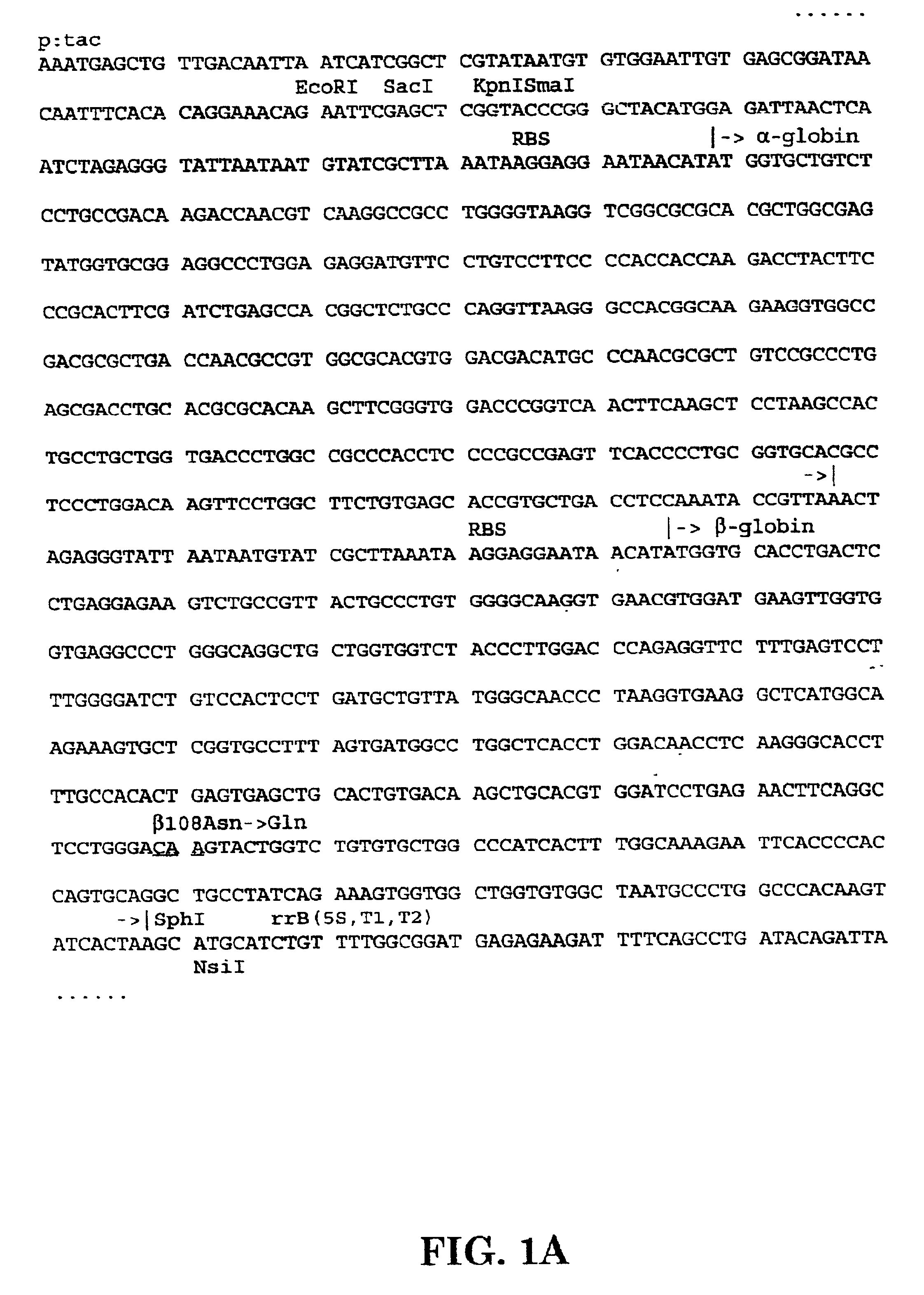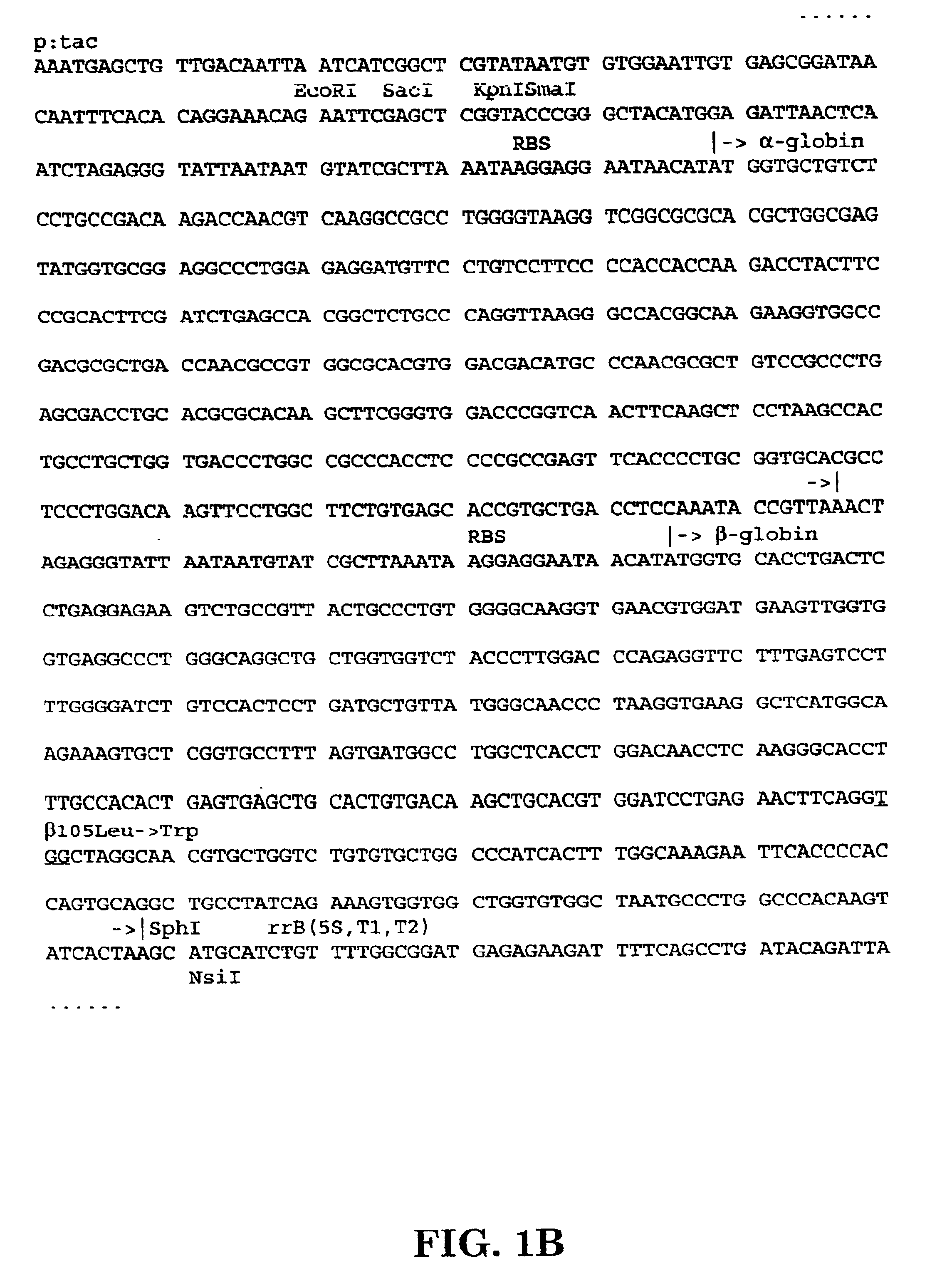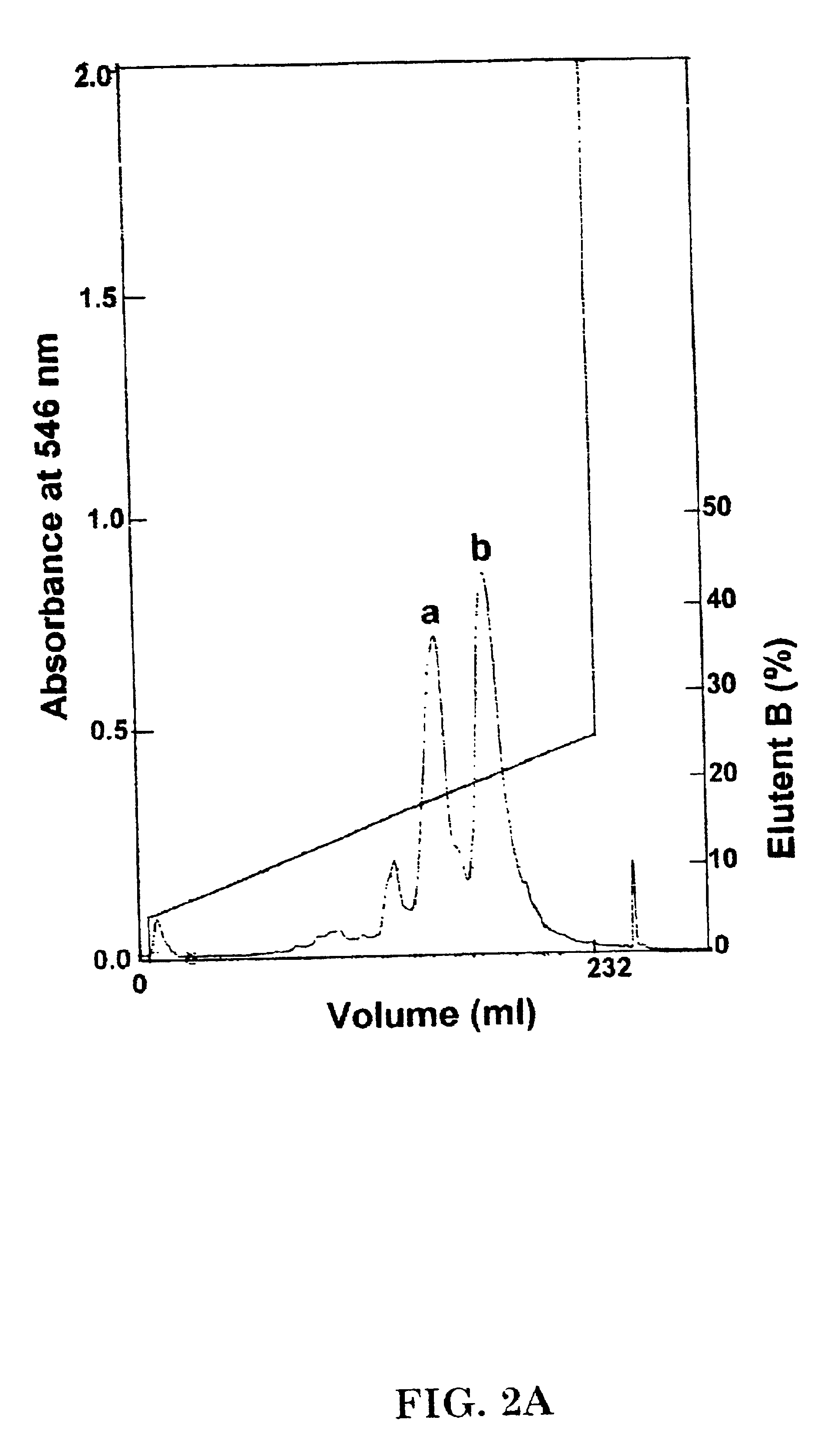Low oxygen affinity mutant hemoglobins
a mutant hemoglobin and low oxygen affinity technology, applied in the field of recombinant mutant hemoglobins, can solve the problems of increasing oxygen affinity, low oxygen affinity of hb, and in the blood plasma,
- Summary
- Abstract
- Description
- Claims
- Application Information
AI Technical Summary
Benefits of technology
Problems solved by technology
Method used
Image
Examples
Embodiment Construction
Construction of Expression Plasmids for rHb (.beta.N108Q) and rHb (.beta.L105W)
The E. coli Hb A expression plasmids pHE2 and pHE7, which respectively contain human .alpha.- and .beta.-globin genes and cDNAs, were used as the starting plasmids for expressing the mutant hemoglobins of the present invention. The construction of plasmids pHE2 and pHE7 and properties of the rHb A produced thereby are fully described in Shen, et al. (1993), U.S. Pat. No. 5,753,465, and Shen, T.-J., et al. Protein Eng. 10: 1085 (1997) (hereinafter "Shen, et al. (1997)t), Kim, et al. (1994), and U.S. Pat. No. 5,843,888), the disclosure of which is incorporated herein by reference.
The construction of plasmid pHE2009 for expression of mutant r Hb (.beta.N108Q) using synthetic globin genes was carried out as follows. The plasmid pHE2 was used as the starting plasmid and an oligonucleotide of sequence 5'-CGTCTGCTGGGTCAGGTACTAGTTTGCG-3' (SEQ ID NO: 1) (mutated codon is underlined) was purchased from DNA Internat...
PUM
| Property | Measurement | Unit |
|---|---|---|
| Acidity | aaaaa | aaaaa |
| Acidity | aaaaa | aaaaa |
| Acidity | aaaaa | aaaaa |
Abstract
Description
Claims
Application Information
 Login to View More
Login to View More - R&D
- Intellectual Property
- Life Sciences
- Materials
- Tech Scout
- Unparalleled Data Quality
- Higher Quality Content
- 60% Fewer Hallucinations
Browse by: Latest US Patents, China's latest patents, Technical Efficacy Thesaurus, Application Domain, Technology Topic, Popular Technical Reports.
© 2025 PatSnap. All rights reserved.Legal|Privacy policy|Modern Slavery Act Transparency Statement|Sitemap|About US| Contact US: help@patsnap.com



